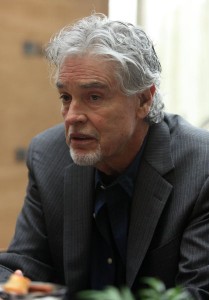Chuck Comisky explique l’ Electronic compositing (1983)
Posted by | Posted in INFOS | Posted on 13-03-2014
 Vous êtes de plus en plus nombreux à souhaiter comprendre le principe de l’ Electronic Compositing. N’ayant pas les compétences requises pour vous pondre un article complet sur le sujet, je vous invite à lire les propos du chef de PSE parus dans les pages du magazine Fantastic Films (déjà chroniqué ici). Une interview où Chuck Comisky en profite pour donner son avis sur le résultat final… De quoi relancer la polémique!
Vous êtes de plus en plus nombreux à souhaiter comprendre le principe de l’ Electronic Compositing. N’ayant pas les compétences requises pour vous pondre un article complet sur le sujet, je vous invite à lire les propos du chef de PSE parus dans les pages du magazine Fantastic Films (déjà chroniqué ici). Une interview où Chuck Comisky en profite pour donner son avis sur le résultat final… De quoi relancer la polémique!
« Basicaly it works this way: you film the foregrounds, film the backgrounds, and transfer these to videotape, then use what we call the Ultimatte for the actual compositing, then transfer the resultant product back to film. But I think there’s only one Electronic composite left in the final film. We knew there was going to be virtually no post production time on the film and that the shots were going to require 4 different levels of compositing, consisting of an extreme foreground, a close midground, a midground, and then a background. On top of that we had to contend focal lengths between both the left and right eyes and also colorblindness. Nothing looks worse than a foreground object that is miscolored, a perfect example is Jaws 3D, where some of the effects look like they were just tacked on to the screen: when they float a bone out into the audience it’s a nice 3-D effect, but it doesn’t look like it’s part of the film. With the video, we were able to look at the 3-d while we were compositing and we could « tweek it » fine tune it, and make all the blends. John Muto our Art Director was able to go down to the lab and make sure all the colors blended and the saturations were matching from element to element. That way we were able to save weeks and bucks by being able to get it done right the first time, and not have to redo it.
Praxis, the other effects house which worked on Jaws 3-D, was handed the problem of taking the electronic stuff and doing it over on film. There was just no way they could get it all done in time. From my viewpoint, it was not a wise decision to go with the film opticals since I don’t think they turned out that good. That may be a terrible thing to say but the people who work for PSE are very talented and I’m very proud of the work they did. They busted their butts and we were all so disappointed. »


